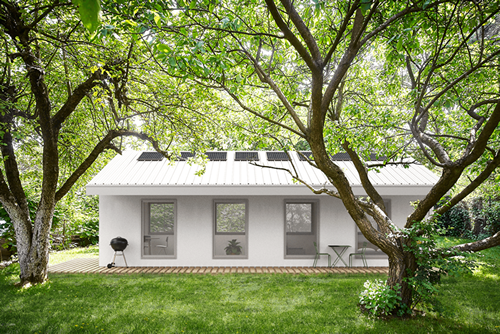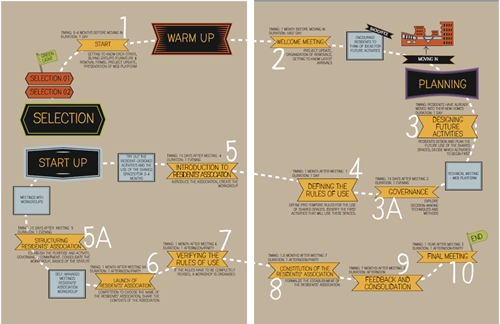Essay QuestionDESIGN GUIDED BY CLIENTS’ NEEDS:
|
|
Exterior Rendering |
I am an architect, builder, and the co-founder of Type Five, a California-based architecture and technology company that aims to increase access to housing and improve the long-term environmental and economic outcomes of homeownership. Type Five builds low-cost, environmentally efficient homes that are designed to be customized and adapted over time. The homes are initially built as simple, open floor plan spaces, which are designed to be reconfigured over time. We empower homeowners by providing them with a digital platform where they can design prefabricated upgrades and interior additions to their homes when and how they see fit. By starting with a simple structure that can develop over time, we can offer our homes at a lower price, while giving owners more control over their residential space. |
Dorit Fromm
|
Fondazione Housing Sociale: The Housing Foundation developed a class to help future residents form a collaborative community in their housing development. From the manual “Starting Up Communities, A Design Kit for Collaborative Housing,” (Fondazione Housing Sociale). |
In the face of global catastrophes, inequities, divisions and isolation, take this year’s question as an invitation towards more collaborative and experimental living. Housing that improves residents’ day to day life. Housing that encourages residents to take an active role in saving resources and creating community. Housing that connects households to each other and the larger neighborhood: visually, casually, through space and over time. All require willing residents as well as good design. What if the social connections of the residents came first before architectural program and built form? Households that share ideas and hopes of how they imagine their day-to-day life together, and make some agreements on their intentions, are more likely to follow through once moved in. |
Elli Mosayebi
|
vacancy - no vacancy project. "Sleep on riposa" |
The vacancy/no vacancy Project. A performative house of the future. One third of the apartments in the city and in the canton of Zurich are occupied by single households, another third of the households are made up of couples and only one third are families and other joint households…The majority of single households are inhabited by women and men between the ages of 30 and 60. This group of single people is very mixed: students, multi-local residents, younger singles, widowed and divorced people are equally part of it. The increase in individual households is accompanied by the individualization of life plans, which has been progressing since the 1960s thanks to increasing prosperity and a marked rise in the level of education. This realization calls for small apartments that are as flexible as possible and the possibility of individual appropriation. |
Augustine Owusu-Ansah
|
Neighbourhood Strategy |
Neighborhood Strategy The provision of housing is architecture’s primordial assignment whose parameters have changed over time and with context. Presently, the housing question provides intensified and new challenges in the shape of deepening inequality, increased urbanisation and the need to mitigate both the causes and effects of climate change. The on-going Covid-19 pandemic is a reminder to address public health issues and of the possibility of future pandemics. In all of this, the poorest in society remain the most vulnerable: the homeless, mentally-ill, people seeking refuge and the lowest income earners. S. Tetteh + Associates’ approach to social/low cost housing design has been shaped by the following: |
RESOURCES:
This is a starting point of diverse books and articles to explore this year’s Berkeley Prize topic. The list includes pertinent research and specific project reviews in the below three categories. Referencing these or other similar resources you use in developing your Proposal and Essay is encuraged.
- Social and behavioral factors in design studies
- Case studies in housing projects
- The co-housing option.
(link here for resources in these three categories)
Additional Help and Information
Are you in need of assistance? Please email info@berkeleyprize.org.|
Elli Mosayebi, Edelaar Mosayebi Inderbitzin Architects (BP2022 Juror): vacancy – no vacancy project. "Floor Plan." (See Essay Question: Introductions by jurors.) 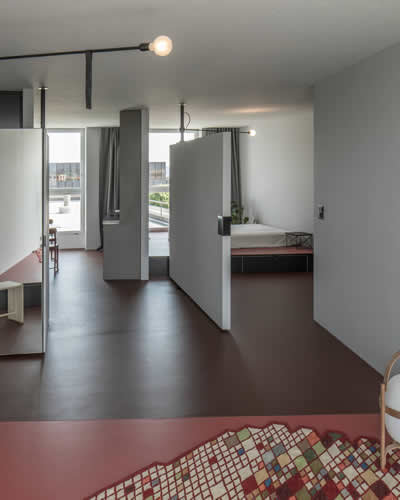 Elli Mosayebi, Edelaar Mosayebi Inderbitzin Architects (BP2022 Juror): vacancy - no vacancy project. "Sleep on riposa." (See Essay Question: Introductions by jurors.) Photo credit: Michael Stirnemann 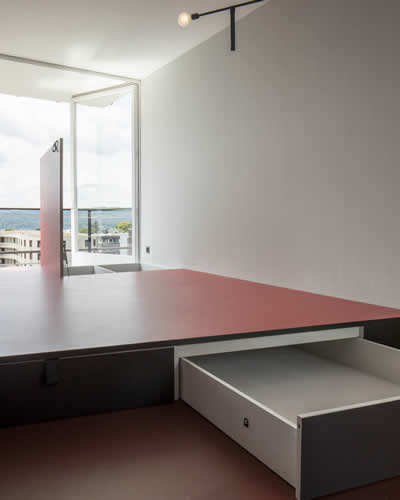 Elli Mosayebi, Edelaar Mosayebi Inderbitzin Architects (BP2022 Juror): vacancy – no vacancy project. "The two built-in platforms contain numerous storage compartments for personal belongings." (See Essay Question: Introductions by jurors.) 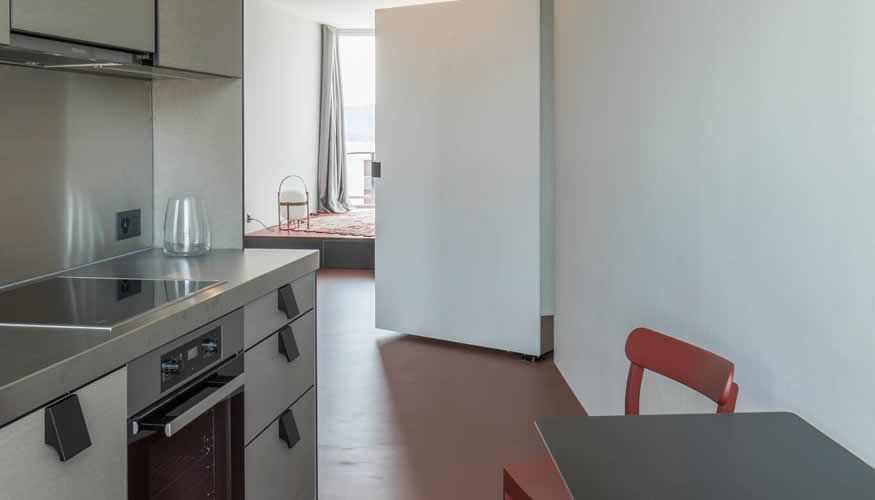 Elli Mosayebi, Edelaar Mosayebi Inderbitzin Architects (BP2022 Juror): vacancy - no vacancy project. "The Kitchen" (See Essay Question: Introductions by jurors.) 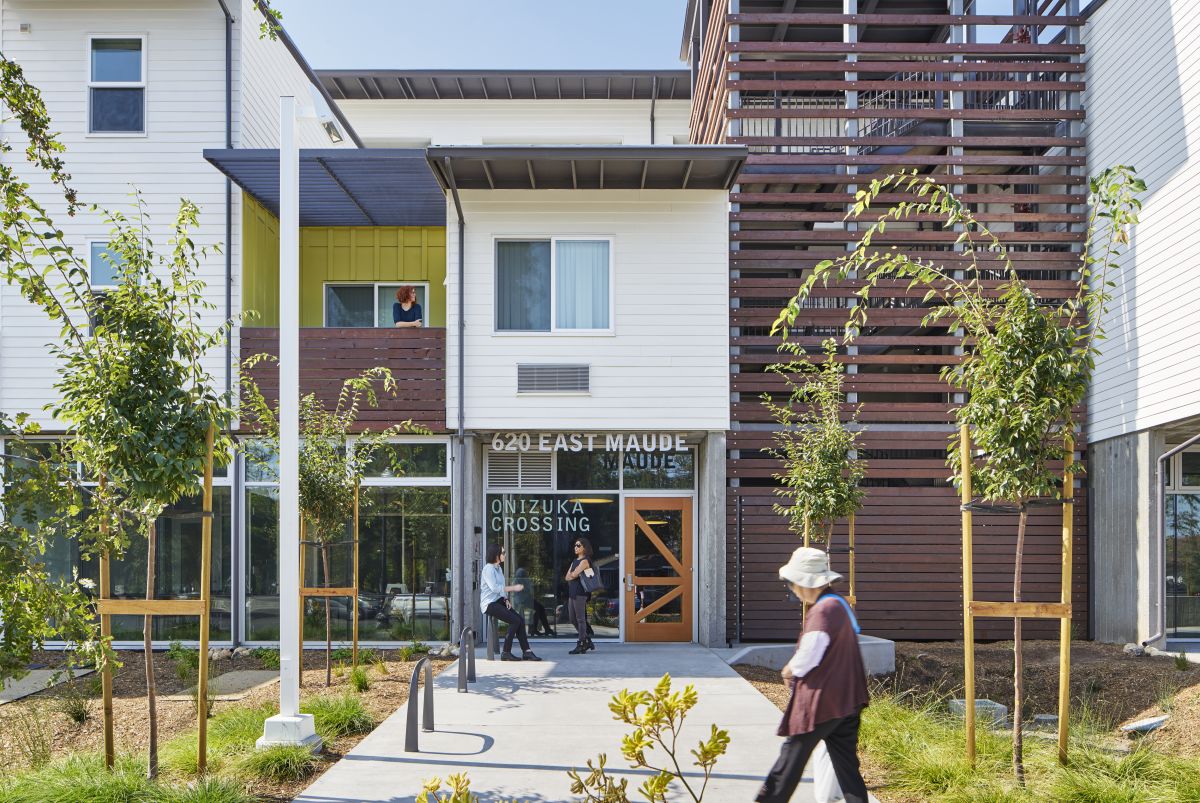 Onizuka Crossing Housing, David Baker Architects, San Francisco, 2016. The result of a partnership between MidPen Housing and the City of Sunnyvale, California, U.S.A., Onizuka Crossing provides 58 low-income working families with new, affordable rental homes in Sunnyvale, the heart of the Silicon Valley. Twenty-nine units are reserved for formerly homeless individuals and their families. (See: https://www.dbarchitect.com/project_detail/178/Onizuka%20Crossing%20Family%20Housing.html) Photo credit: ©Bruce Damonte.from DBArchitect.com. 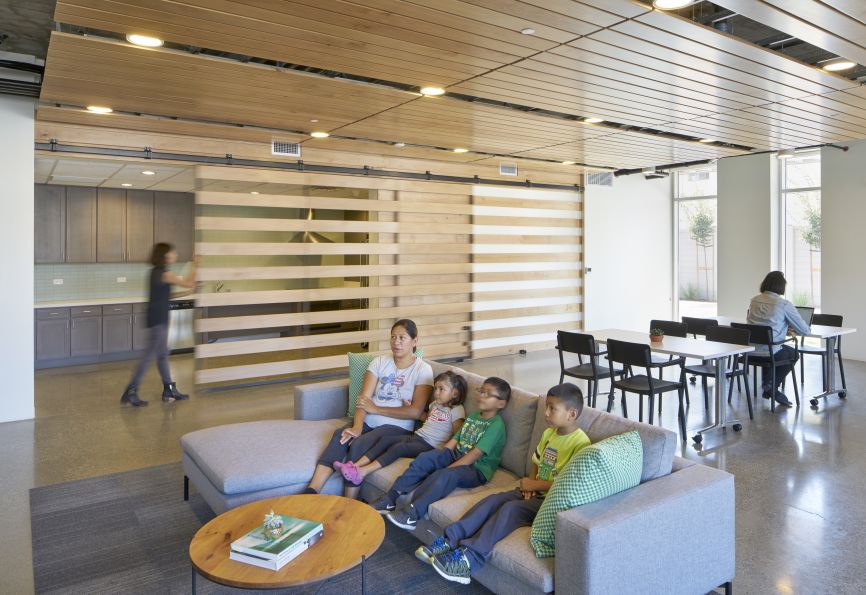 Onizuka Crossing Housing, David Baker Architects, 2016. "Former homeless residents receive extensive supportive services in collaboration with the Santa Clara County Department of Behavioral Health and the U.S. Veterans Administration Palo Alto Healthcare System... Onizuka Crossing is a prime example of infill development, transforming a U.S. National Guard armory building into supportive, permanent affordable housing." (See: https://www.dbarchitect.com/project_detail/178/Onizuka%20Crossing%20Family%20Housing.html) Photo credit: ©Bruce Damonte from DBArchitect.com. 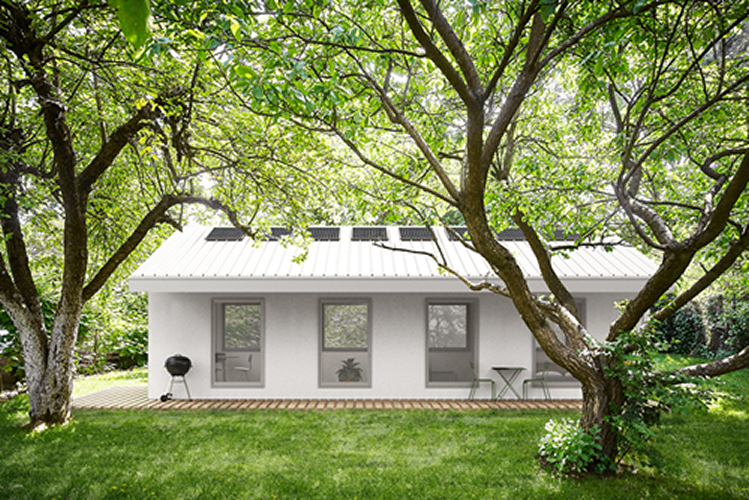 Aleksis Bertoni, Architect, Type Five (BP2022 Juror): Flexible housing adpated over time. Isometric interior perspective of one example. (See Essay Question: Introductions by jurors.) 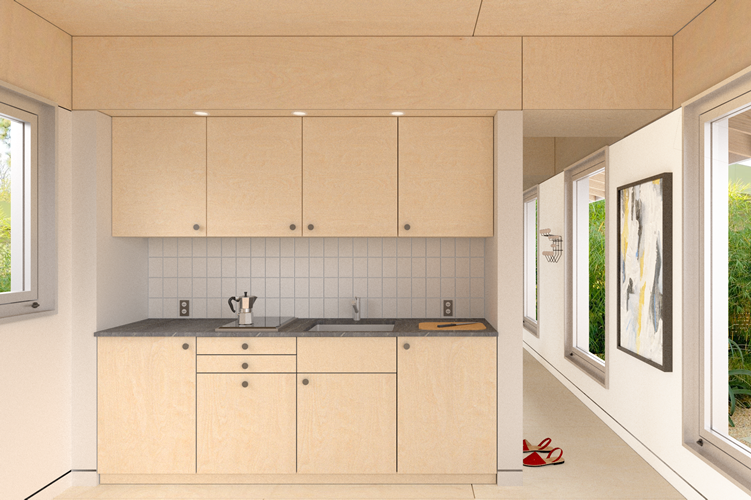 Aleksis Bertoni, Architect, Type Five (BP2022 Juror). Flexible housing adapted over time. Kitchen rendering of one example. (See Essay Question: Introductions by jurors.) 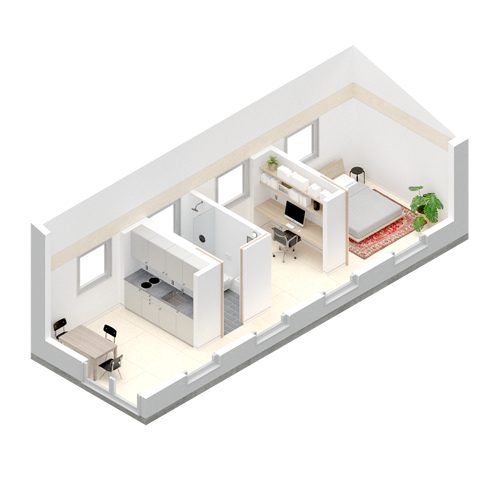 Aleksis Bertoni, Architect, Type Five (BP2022 Juror): Flexible housing adpated over time. Isometric interior perspective of one example. (See Essay Question: Introductions by jurors.) 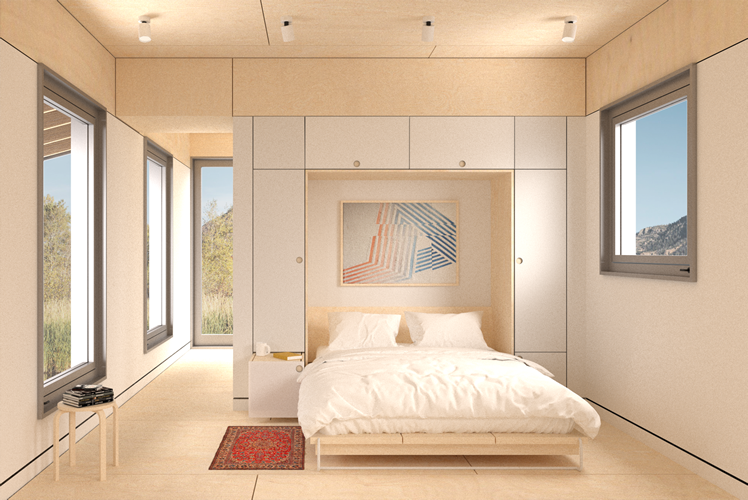 Aleksis Bertoni, Architect, Type Five (BP2022 Juror). Flexible housing adapted over time. Bedroom rendering of one example. (See Essay Question: Introductions by jurors.) 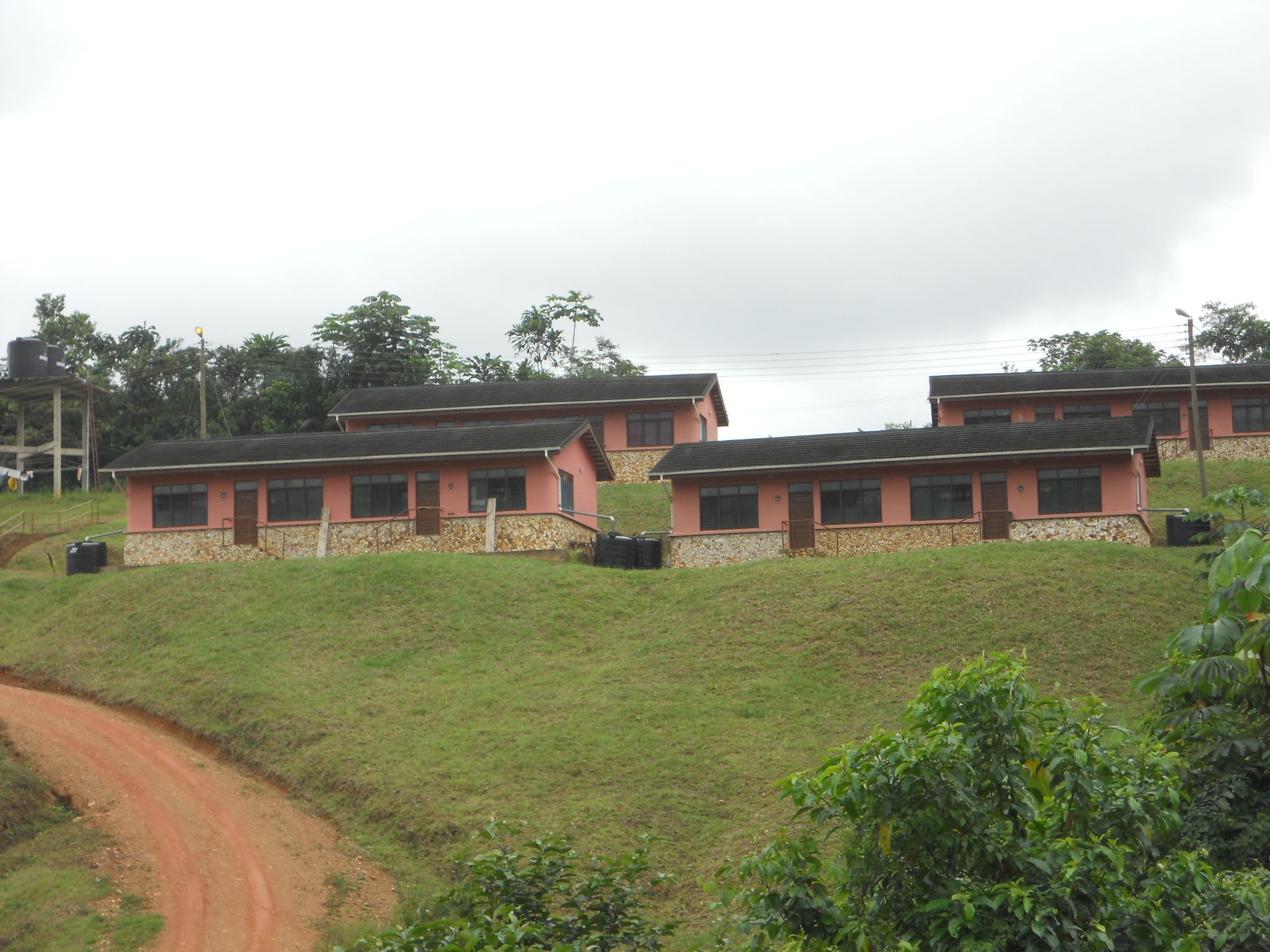 S. Tetteh + Associates Architects, Accra, Ghana. Low-cost housing project for rangers and conservation staff at the Bia and Ankasa Reserves, Juabeso-Bia district, southwest Ghana. 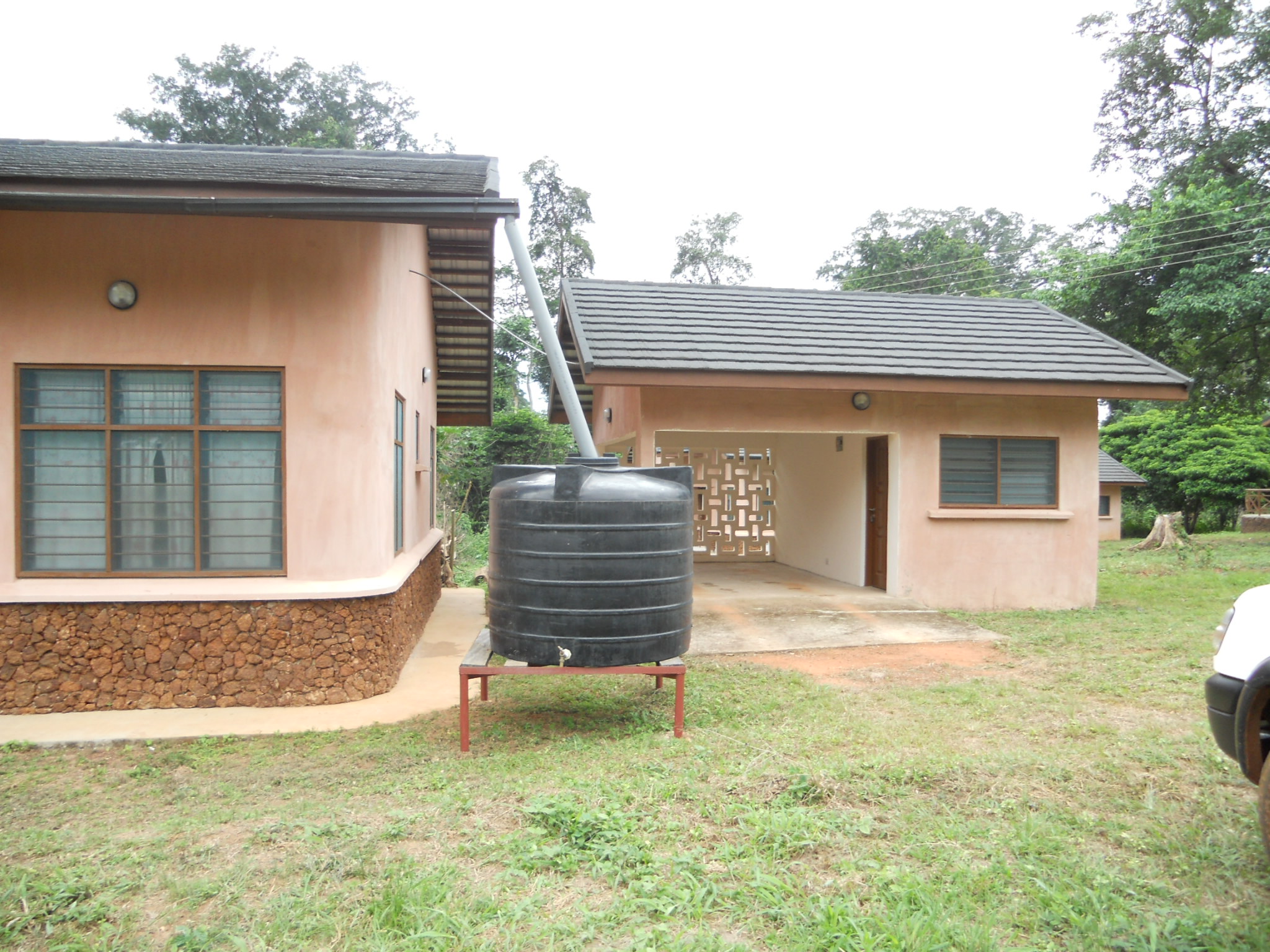 S. Tetteh + Associates Architects, Accra, Ghana. Low-cost housing project for rangers and conservation staff at the Bia and Ankasa Reserves, Juabeso-Bia district, southwest Ghana. 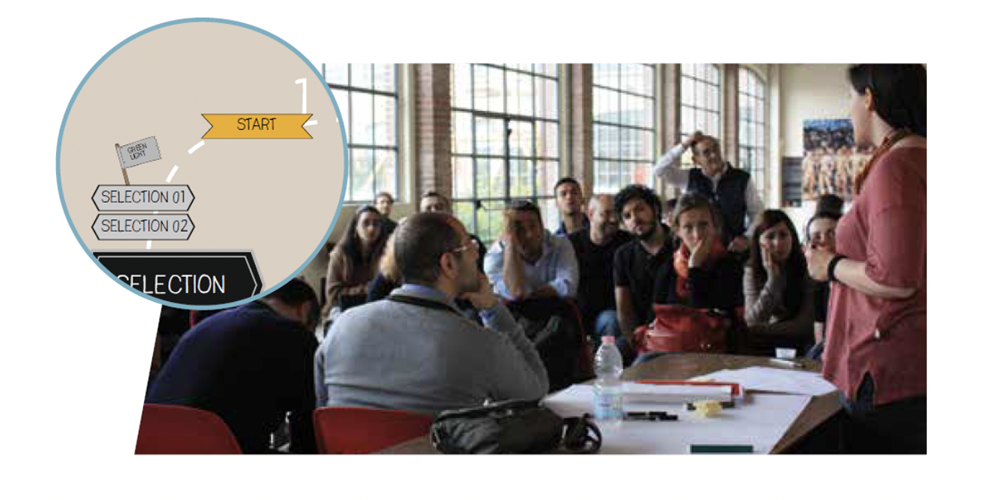 Fondazione Housing Sociale, Milan, Italy: The Housing Foundation developed a class to help future residents form a collaborative community in their housing development. Research by Dorit Fromm, Writer, Architect, BP2022 Juror: (See Essay Question: Introductions by jurors.) 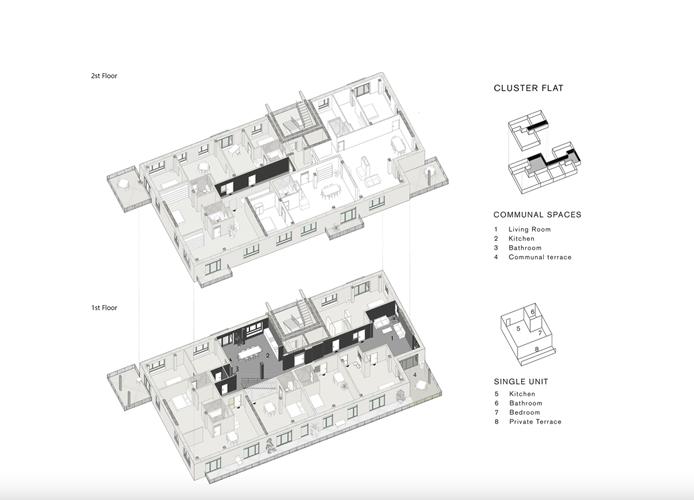 From the manual "Starting Up Communities, A Design Kit for Collaborative Housing," Fondazione Housing Sociale, Milan, Italy. Research by Dorit Fromm, Author, Architect, BP2022 Juror: (See Essay Question: Introductions by jurors.) 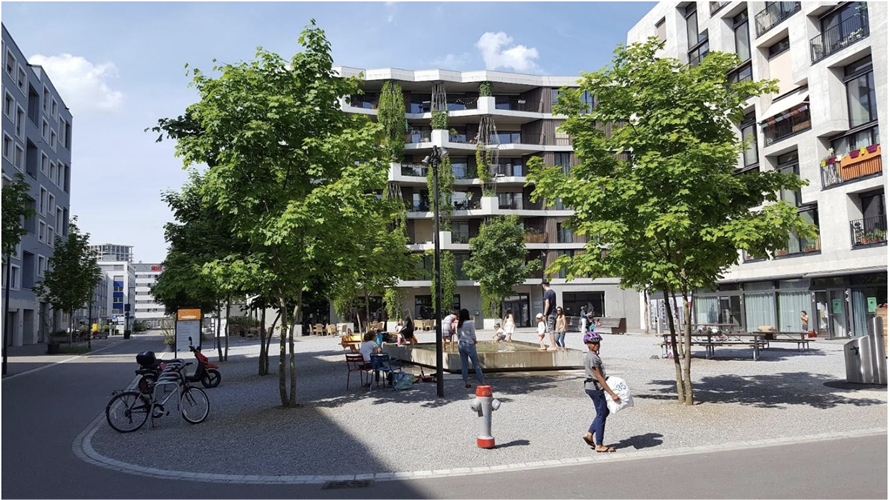 Mehr als Wohnen, Switzerland: A plaza allows neighbors to mingle and is open to the larger neighborhood. Research by Dorit Fromm, Author, Architect, BP2022 Juror: (See Essay Question: Introductions by jurors.) 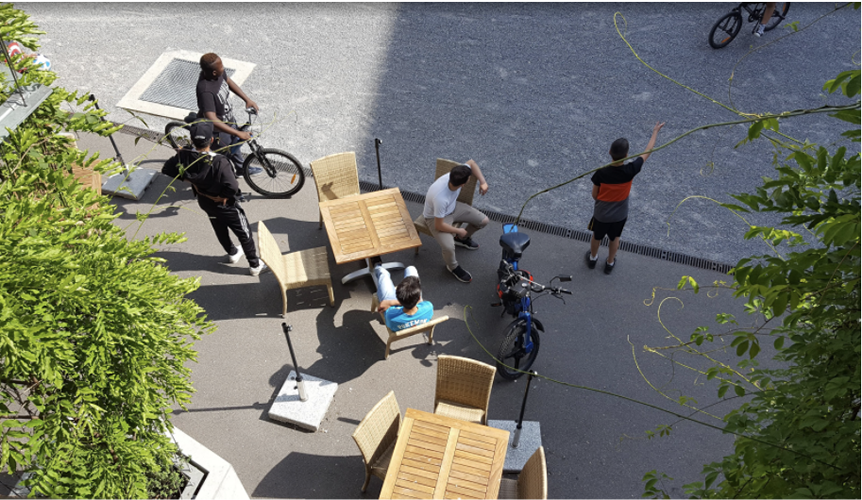 Mehr als Wohnen, Switzerland: Childcare and afterschool care are located on the ground floor level of the housing, as well as a café and other neighborhood services. Research by Dorit Fromm, Author, Architect, BP2022 Juror: (See Essay Question: Introductions by jurors.) 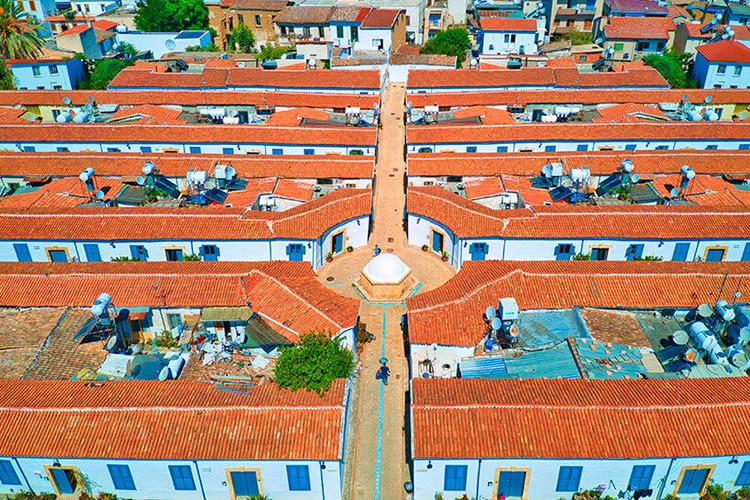 Samanbahce, Nicosia, North Cyprus. A mid-20th century social housing experiment. Drone-view. (See: https://www.designboom.com/architecture/alp-galip-captures-cyprus-first-social-housing-complex-samanbahce-07-17-2021) (Photo by Alp Galip for Designboom.com) 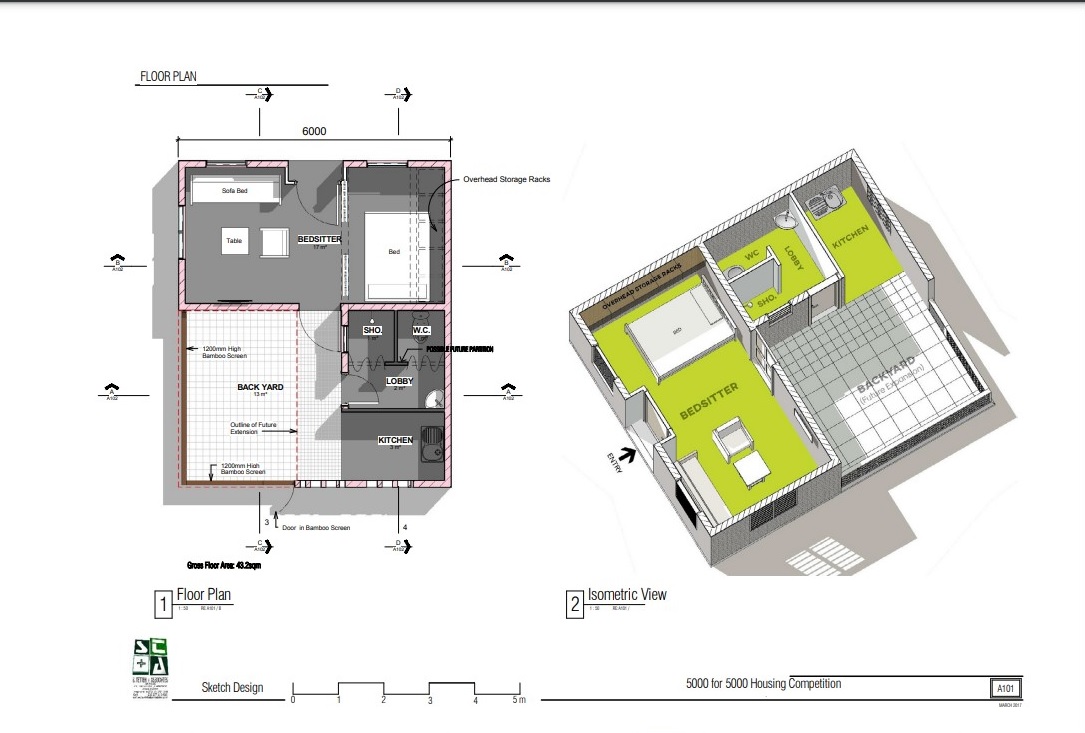 Augustine Owusu-Ansah, S. Tetteh + Associates Architects (BP2022 Juror): Shelter Afrique's 5000 for 5000 Affordable Housing Competition winning entry. (See Essay Question: Introductions by jurors.) 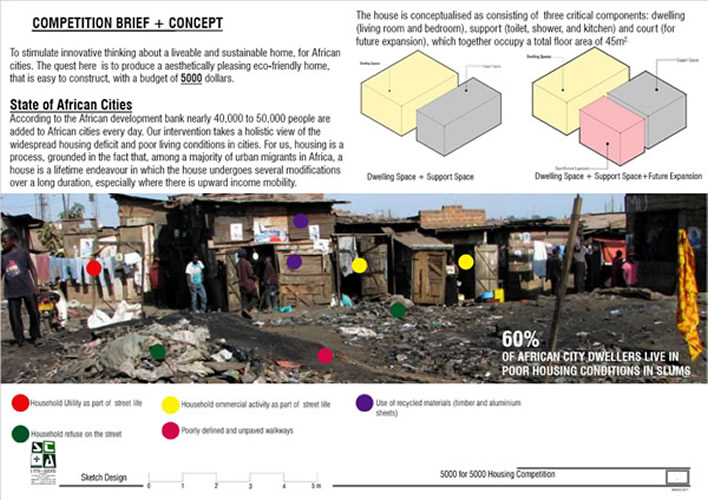 Augustine Owusu-Ansah, S. Tetteh + Associates Architects (BP2022 Juror): Shelter Afrique's 5000 for 5000 Affordable Housing Competition winning entry. (See Essay Question: Introductions by jurors.) 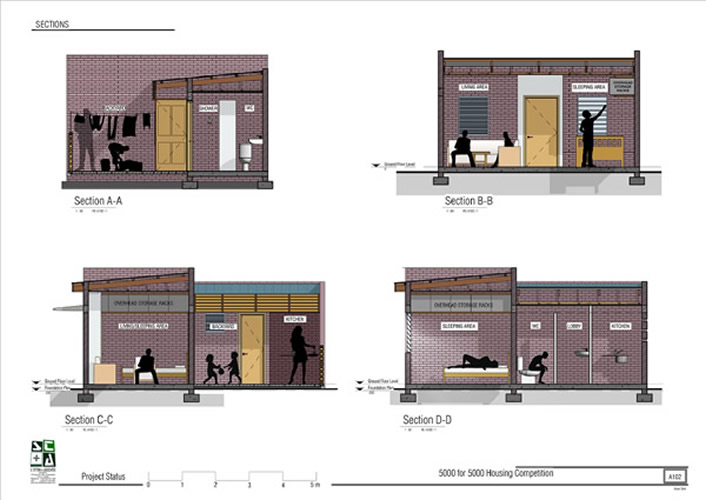 Augustine Owusu-Ansah, S. Tetteh + Associates Architects (BP2022 Juror): Shelter Afrique's 5000 for 5000 Affordable Housing Competition winning entry. (See Essay Question: Introductions by jurors.) 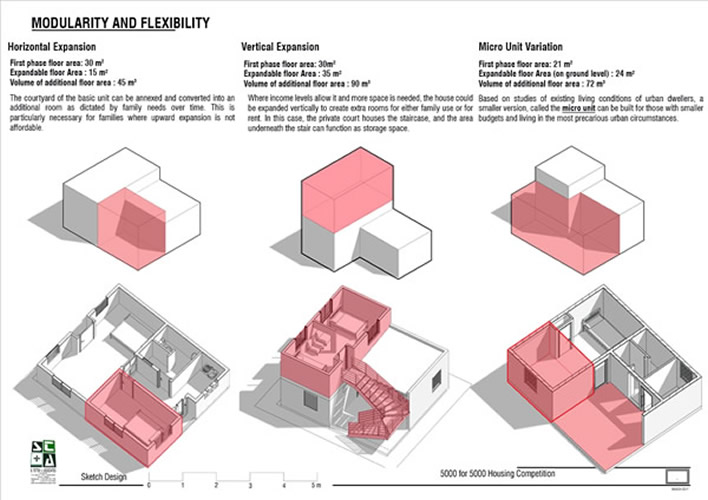 Augustine Owusu-Ansah, S. Tetteh + Associates Architects (BP2022 Juror): Shelter Afrique's 5000 for 5000 Affordable Housing Competition winning entry. (See Essay Question: Introductions by jurors.) 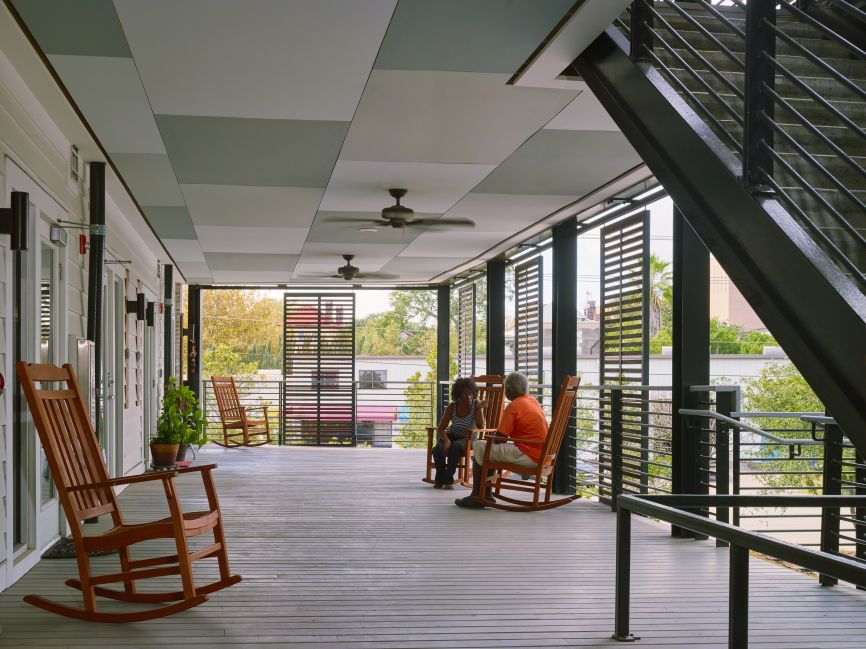 Williams Terrace, Charleston, South Carolina, U.S.A., Architect of Record, McMillan Pazdan Smith Architecture, Spartanburg, South Carolina, U.S.A. /Design Architect, David Baker Architect, San Francisco, California, U.S.A., 2017. "Williams Terrace won the 2019 American Institute of Architects/Housing and Urban Development Secretary's Housing and Community Design Award for Excellence in Affordable Housing Design. This singular nation-wide award recognizes architecture that demonstrates overall excellence in terms of design in response to both the needs and constraints of affordable housing... Wide porches that double as circulation offer places to sit, meet in passing, and personalize a bit of outdoor space." (See: https://www.dbarchitect.com/project_detail/176/Williams%20Terrace%20.html) Photo credit: Chris Luker from DBArchitect.com.  Williams Terrace, Charleston, South Carolina, U.S.A., Architect of Record, McMillan Pazdan Smith Architecture, Spartanburg, South Carolina, U.S.A. /Design Architect, David Baker Architect, San Francisco, California, U.S.A., 2017. "The design team worked closely with the Housing Authority of the City of Charleston to create a dynamic building that meets the challenges of the site—located in a high-velocity flood zone—and respects the gracious built fabric of downtown historic Charleston... Apartments connect to the wide circulation porches, which have room for some personal touches." (See: https://www.dbarchitect.com/project_detail/176/Williams%20Terrace%20.html) Photo credit: Chris Luker from DBArchitect.com. 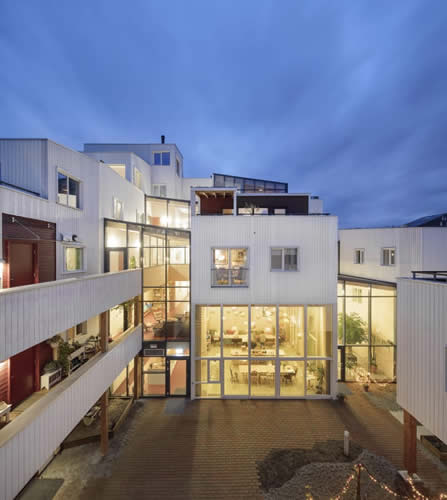 Vindmøllebakken, 40-unit cohousing project, Stavanger, Norway, 2019. Designed by founding architects Siv Helene Stangeland and Reinhard Kropf of Norwegian firm Helen & Hard. The architects now live in Vindmøllebakken. Photo credit: Minna Soujoki Langbord/Courtesy of Helen & Hard via Editon.CNN.com 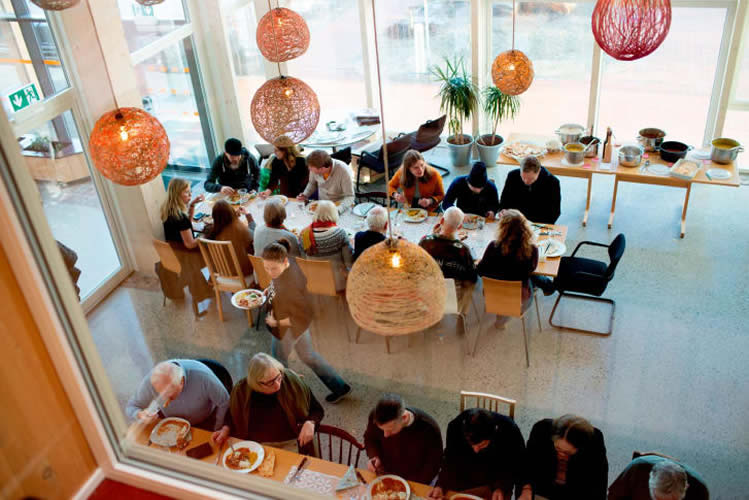 Vindmøllebakken, 40-unit cohousing project, Stavanger, Norway, 2019. In addition to Vindmøllebakken (see previous slide), Helen & Hard are reported to having five other cohousing projects in the works. Photo credit: Sindre Ellingsen/Courtesy of Helen & Hard via Edition.CNN.com 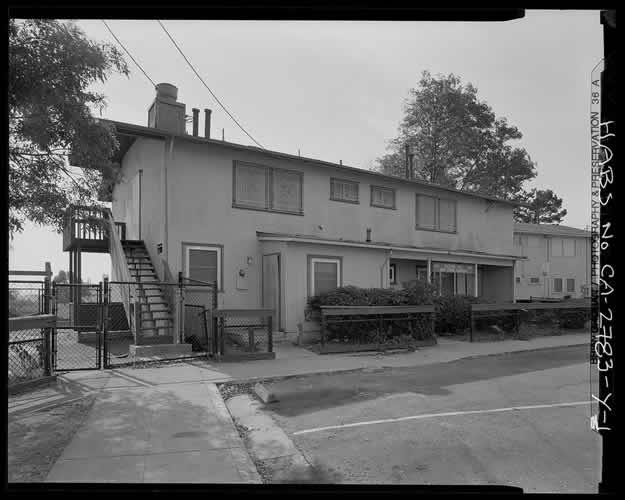 Easter Hill Village, Richmond, U.S.A., 1954. Demolished, 2004. "It was the most significant public effort to provide affordable permanent housing for many families displaced by demolition of temporary World War II housing. It was the first multi-unit residential development to combine the twin themes of the planned unit development with the individuation of units... and the care given to integrating a multi-unit residential development to its site." Historic American Buildings Survey, Library of Congress, U.S.A. (See: https://www.loc.gov/item/ca3350/) 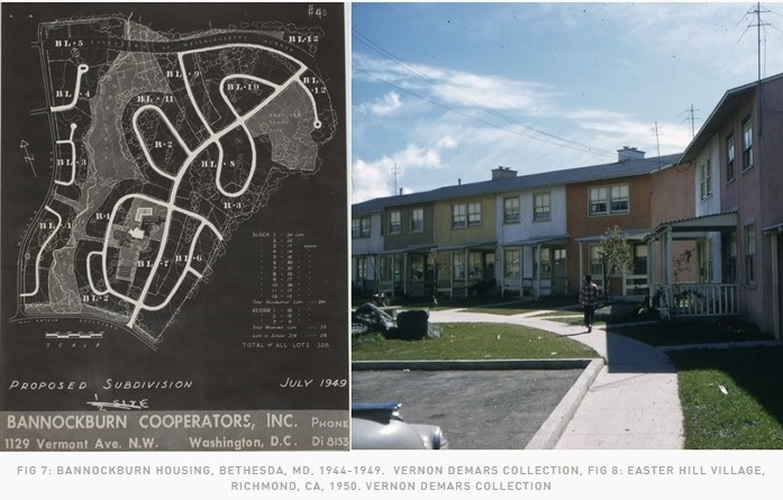 Richmond Village (formerly Easter Hill Village - see previous slide), California, U.S.A., 2008. "The goal for the …Richmond Village project was to turn 300 units of crime-ridden, run-down public housing into a vital neighborhood anchored by a community center and public open space. The development was originally built in 1954 and was a model of public housing until neglect, crime and poverty took over. The Richmond Housing Authority together with Richmond Village…residents collaborated to re-construct a vision of community. The vision included open/community space with mixed-income housing; 100% of the rental housing is affordable, with 70% allocated for public housing residents. The for-sale family homes have a mix of low, moderate and market-rate housing." (See: https://www.nibbi.com/projects/richmond-village/) |

